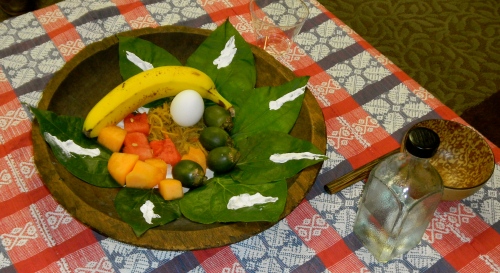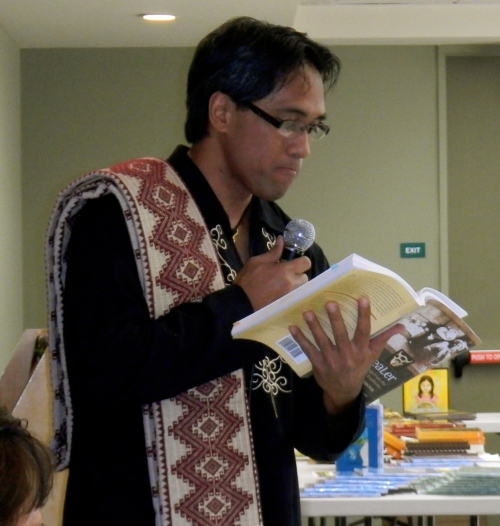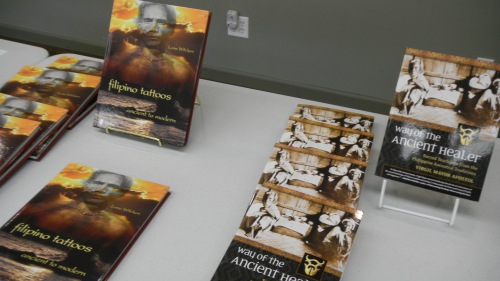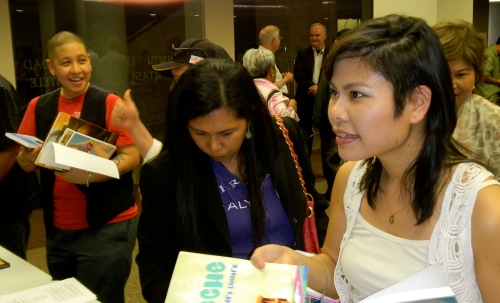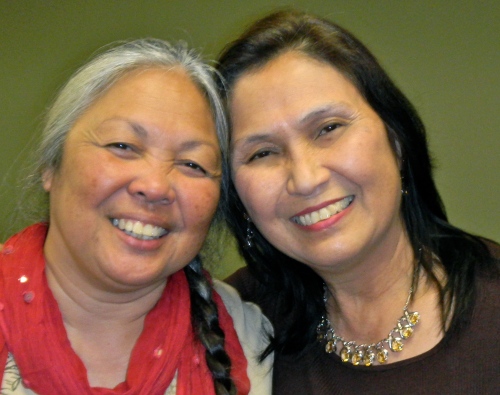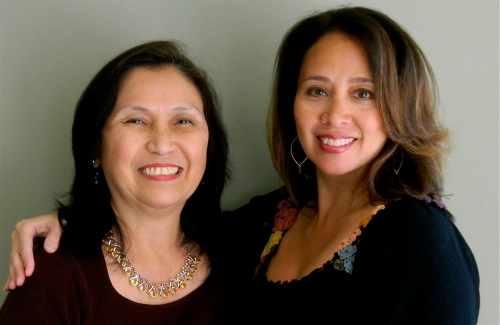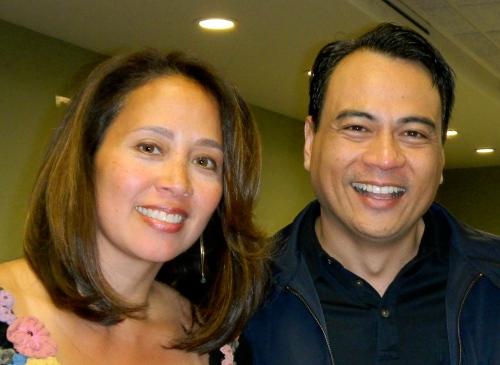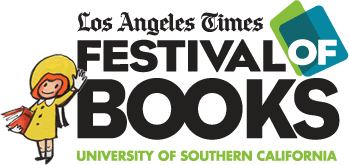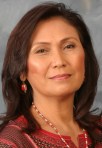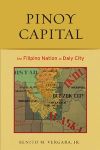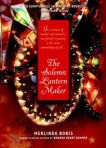I am freshly returned from my trip to Los Angeles, where Angelica’s Daughters co-author Cecilia Brainard and her gallant husband hosted me, a bedraggled suburban mother of three who spends most weekends watching her daughters play softball. Here we are in the courtyard of the Brainard’s lovely home. I bet you’re wondering where that spiral staircase leads, right? I’ll never tell:
On Friday night, we headed downtown to Philippine Expressions’ annual Authors Night, which turned out to be the most delightful, quintessentially Filipino event I’ve had the pleasure of attending since…I don’t know…my family reunion last June? By scheduling the event to run for a lengthy 4 hours, Linda Nietes provided ample room for the phenomenon universally known as “Filipino Time.” Sure enough, there weren’t many people in the audience at 5:00, but by 6:30 things were off and running.
Virgil Mayor Apostol (Way of the Ancient Healer) and Lane Wilcken (Filipino Tattoos: Ancient to Modern) started the program with a traditional Filipino cleansing ritual. Virgil began with a chant to clear the space of unwanted energies, and then Lane gave an invocation to the ancestors, inviting them to enjoy the offering of food and hang out with us for the night:
Virgil talked about how writing his book was a way to answer his personal curiosity and to regain what has been lost. Hey, did you know that rice can be used as a neutralizing agent to drive out unwanted spirits? It occurs to me now that maybe this is why we throw rice at weddings. Or not. I should have asked him about that. Anyways, here’s Virgil reading from his book:
Also in the “did you know” category: Did you know that Lane Wilcken’s book, Filipino Tattoos: Ancient to Modern, and Virgil’s book are from two different publishers, but had the exact same publishing date? And that they are friends and colleagues who have been “kicking ideas around with each other” since the mid 90s? Well, now you do. From Lane I learned that traditional Filipino tattoos, far from being the sign of rebellion or quest for individuality that they often represent today, were rather an indication of compliance to spiritual values. Women were believed to be inherently spiritual, and so as a rule were tattooed at puberty. Men, on the other hand, had to earn their tattoos through acts of bravery, warfare, the successful courtship of a woman, and whatnot. I decree that both Lane and Virgil’s books be made a part of your personal library (they are now a part of mine):
Lorna Ignacio Dumapais, editor of Filipino American Experience: The Making of a Historic Cultural Monument, shared some of the history of LA’s Filipinotown, while children’s author James Daos gave an energetic introduction to his book Ants on the Rainbow…You’ll Never Know.
Next up were Walang Hiya editors Lolan Buhain Sevilla (who flew in from NYC!) and Roseli Ilano, who talked about how their anthology came to be and how impressed they were by the fine work they received (more than 100 submissions!). The book is being used in several classrooms now, and it features a terrific mix of established (like Reggie Cabico, for example) writers and emerging talents who tackle a variety of issues that impact our community—issues of identity, the relationship between generations, abuse, war, the diaspora. Here are Lolan (far left) and Rosali (near right) chatting with book buyers:
Cecilia introduced her new collection Vigan & Other Stories, and we had the opportunity to hear a bit from one of the pieces. I am in awe of Cecilia’s storytelling prowess and her literary output, both of which are a direct result of simple hard work. If just a fraction of that rubbed off on me this weekend, I’d be a lucky writer indeed. I’m looking forward to digging into Vigan & Other Stories, but I’m also hitting myself over the head for forgetting to have Cecilia sign it! Here she is with babaylan scholar Leticia Layson (I think they used to be in a writer’s group together!):
I used my own 6 minutes of speaking time to introduce the concept of dugtungan, talk a little bit about our writing process, and to read just a few paragraphs from the beginning of the novel. I told folks that our hope for the book is that they read it, of course, but also that it might inspire them to work with others on a similar project. Because while it’s nice that we ended up with a finished work, there was great joy and satisfaction in the dugtungan process itself and the spirit of bayanihan in which Cecilia, Nadine, Erma, Susan, and I worked. I wish this were a picture of all five of us, but two of us will have to do for now:
Closing out the evening was the man of the hour R. Zamora Linmark (“Zack”), whose long-awaited novel Leche is so damn good it makes me want to…to…to…be a better writer. Like a waaaaaay better writer. Zack had us all laughing with his spot-on descriptions of Filipinos and their balikbayan boxes and his ever-so-useful “Tourist Tips.” Pressed by Linda Nietes to read a little from his first book Rolling the R’s, he read a piece about Nelson who is “as Filipino as any Filipino can be,” but who has a big huge problem dealing with it. This was the first time I’d ever met Zack, and of course I went all demented fangirl on him and immediately asked for a picture. Here he is humoring me :
I would blog about what happened the next day at the LA Times Festival of Books, but Cecilia has beaten me to the punch. Read all about it here at her blog!
All of the books mentioned here can be purchased via Philippine Expressions Bookshop (they’re available at the usual places as well, but why not support our community booksellers?). Just send an email to orders@philippineexpressionsbookshop, and Linda Nietes will take good care of you.
Thanks for reading! Check back soon!
~ Veronica


